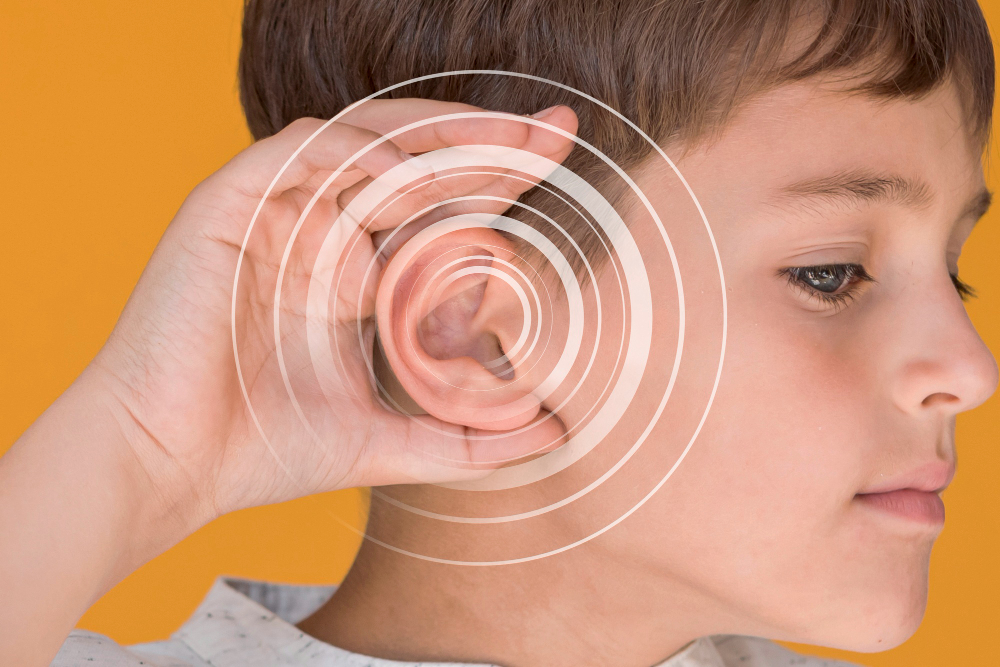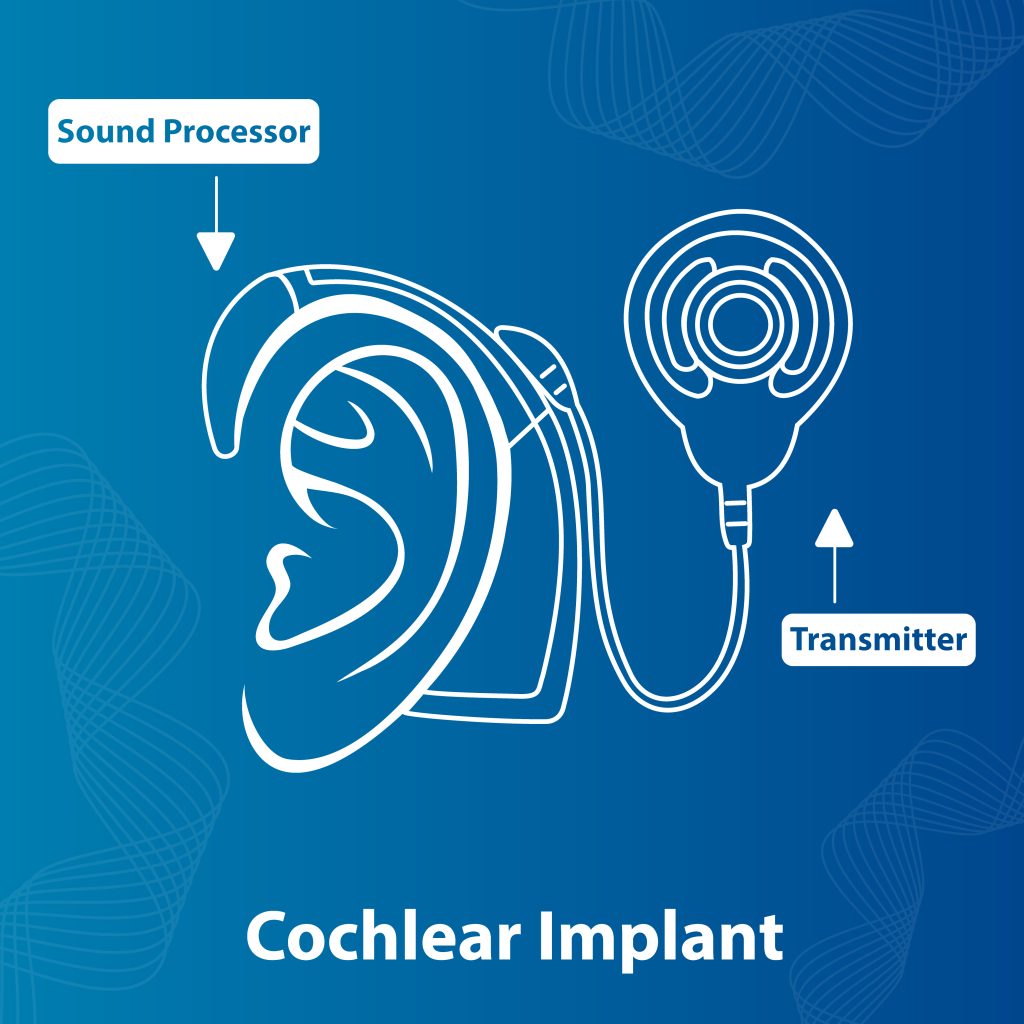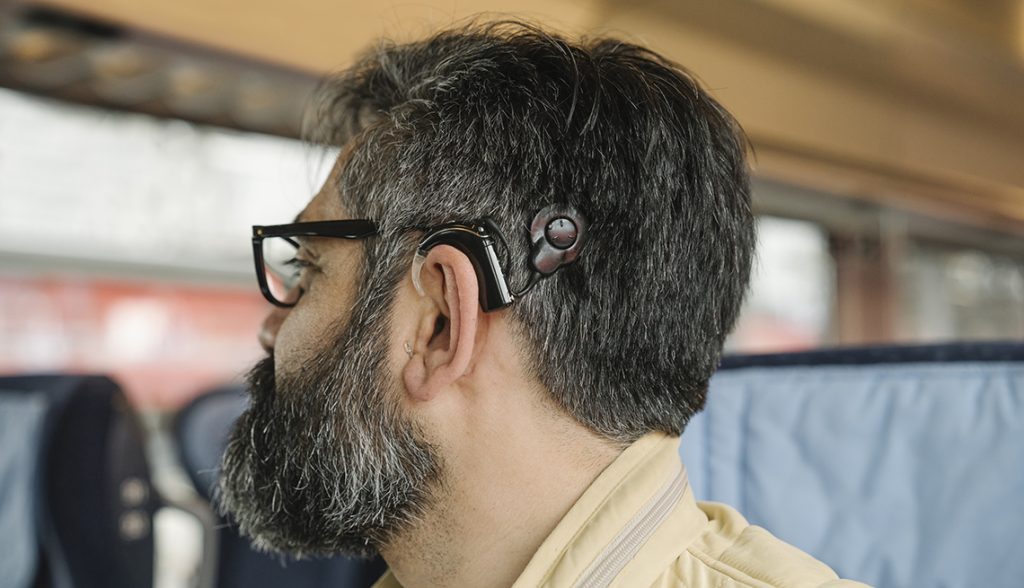Cochlear Implant Surgery
Electronic devices known as cochlear implants are designed to minimize hearing loss. Rather than restoring hearing, they enhance speech comprehension and increase the range of sounds that can be heard. Individuals who undergo implantation typically experience improvements in auditory function through the use of audiologic therapy, which helps them to reacquire the ability to hear again.

How does a cochlear implant work?
Instead of just amplifying noises like a regular hearing aid would, a cochlear implant creates the feeling of hearing by going around the broken hair cells in the inner ear. It does this by using electrical impulses to directly stimulate the nerves responsible for hearing.
What are the usual advantages of getting a cochlear implant?
There are various factors that determine the benefits that a patient may receive, leading to a significant variation in expected outcomes.
- The degree of hearing loss
- At what age did the hearing loss start for either you or your child?
- How long the individual has been experiencing a loss of hearing.
- The previous utilization of hearing aids before implantation.
- Access to auditory stimulation during the crucial stage of language development, which occurs before the age of five.
- Age at time of implantation
- The condition of the cochlea and the nerve responsible for hearing.
- The background of meningitis prior to the receipt of a cochlear implant.
- The drive and dedication of the person receiving something, as well as the encouragement of their family members who assist them.
A cochlear implant can provide the ability to hear and notice sound at a basic level. Typically, individuals will be able to hear speech and environmental noise better and improve their lipreading abilities. However, some patients may experience further improvements like understanding speech without visual aids and the capability to use the telephone. It is challenging to predict an individual’s level of speech comprehension after receiving a cochlear implant. As a result, research is ongoing to uncover the reasons for variations in patient outcomes post-implantation.
What are the types of cochlear implants?
The type of cochlear implant is determined by where the external sound processor is positioned. Cochlear implants use equipment such as external sound processors, which may vary depending on their location. The processor has the potential to be located in various areas:
- Behind your ear.
- Attached to your clothes.
- On your scalp.

What occurs while undergoing cochlear implant surgery?
The medical procedure of cochlear implant is performed either in a clinic or a hospital, typically taking around two hours to complete. The patients are administered general anesthesia to ensure they are unconscious during the surgery.
- The doctor creates a small cut at the back of the ear and proceeds to make a hole in the mastoid bone in order to direct the electrode towards the cochlea.
- The electrodes of the implant are inserted into the cochlea.
- The doctor implants an internal processor in a pocket located behind the ear, between the muscle and bone. This processor is designed to receive information from an external speech processor that will be worn over the skin.
- After the cuts are sealed shut, the individual is transferred to the recuperation section and carefully monitored while they regain consciousness from the sedation.
After being closely monitored for several hours, the patient is released to return home and recuperate. Following the surgery, the hearing on the side where the implant was placed may initially vary as it takes a few weeks for the device to be configured. This waiting period allows for the incisions to properly heal. It’s important to note that during this interim time, the use of a hearing aid in the same ear where the procedure was done is not recommended.
After Surgery
Activation of Implant After the surgery, a period of two to four weeks is necessary for the healing process before the device can be activated. Once you have successfully been checked-up post-surgery, you will revisit your audiologist to receive the external component and turn on the implant.
Adjusting the DeviceCareful calibration of the implant is essential to achieve optimal hearing. Acclimating to this new way of listening takes time and effort. Your care team will assist you in this process, and with their guidance, you can expect to make progress. It is recommended that you return for check-ups with your audiologist at three, six, and twelve months following implantation activation. During these appointments, your physician will fine-tune the implant settings to enhance your hearing.
As a part of our aftercare program, you will have the opportunity to work with our speech-language pathologists to enhance your ability to listen and communicate, which will aid in achieving optimal hearing capabilities. Aural rehabilitation is an essential part of this process.
Recovery After Cochlear Implant Surgery

Prior to departure from the hospital or surgery center, you will be provided with guidance on how to properly tend to the incisions, which may involve:
- Instructions on how to replace bandages and take care of surgical stitches.
- The time to start cleaning the surgical wound site again is typically a day or two after the operation.
After the operation, the surgeon will check the cuts and take out the stitches during a check-up after about a week. It is generally advised to allow three to four weeks for the region to mend before using the cochlear implant.
After the procedure, it is important to notify the doctor if there is any escalation in discomfort, expansion of swelling, heightened discharge or a rise in body temperature.
How long do cochlear implants last?
It varies based on the specific device. Generally, the internal components such as the transmitter and electrodes have an indefinite lifespan. However, the external components like the sound processor and microphone usually have a lifespan of around five to ten years.
Treatment in Türkiye:
The medical staff of surgical teams, doctors and consultants in Rehab Türk can provide the best treatment options and free consultations – by striving to keep abreast of the latest medical technologies and methods.

